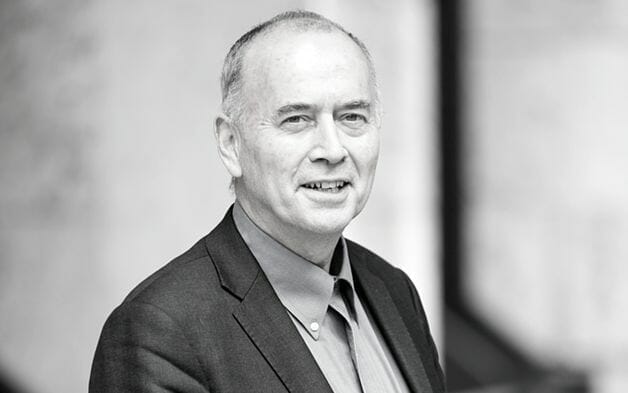Being joined-up is an interesting phrase. Its use grew up in government where it was a beacon to draw on best practices and behaviours in coordination between wings of government, collaboration between key members of government and coherence of thinking in the policy setting process.
All fine aspirations. All devilishly difficult. In the main, joined-up government is an oxymoron.
In this article, we apply those three C’s to the investment industry and specifically the asset owners. We suggest the joined-up term involves getting the fullest benefits from coordination, combinations and coherence across people, teams, organisations and ideas. The investment enterprise at its core has a mission to add value to capital by combining the efforts of separate groups of people in the pursuit of return. Monk and Rook in their investor identity paper put it this way: ‘All investors produce returns in the same general way: they take capital, people, processes and information as inputs and combine them to generate investment returns, which increases financial capital’.
The complexity of the investment industry is clear from just how many groups of people make up the ecosystem of an asset owner – board, executive team, support teams, asset managers, other providers, investee entities, regulators, end investors – these make up most of it, but there are more, the ripples carry on.
So, are there some general conclusions about how to optimise these combinations and bring greater value creation to the asset owner? Essentially, can the asset owner become better joined-up?
It turns out that there are several ways to produce larger combinatorial benefits, but they all involve the deployment of the soft and subtle organisational alpha that is generated from a mosaic of governance, culture, talent, and technology.
The key piece of this mosaic is the alignment of the organisation to one set of specific goals. In this area the approach that secures alignment is one where improvements to the total portfolio is the arbiter of success. This is not the traditional way things are done – the strategic asset allocation (SAA) approach with its policy benchmark introduces biases and the drag from tracking errors. Instead, you need a common framework best described as the total portfolio approach (TPA) that has all investments and groups compete for capital with their best ideas for the total portfolio.
Securing the best organisational alpha for asset owners will depend heavily on four combinations:
- the board and executive management combination
- the combination within the asset owner of specialist teams (asset classes, strategy, risk, etc) and support functions working in full alignment
- the asset owner and asset manager combinations
- the asset owner and asset manager combination with investee entities employing stewardship and engagement activities.
Each of these areas is difficult. Combinations require significant levels of trust, co-operation, and shared understanding of goals. The organisational incentives may pull in another direction away from the goals. Organisations tend towards one dominant in-group and multiple out-groups and silo behaviours are widespread as a result.
This is accentuated when the out-groups have intrinsic alignment differences as commonly occurs. We also see cognitive errors in how asset owners see collaboration with its merits under-recognised. Some of the blind spots comes from the difficulties in measuring and attributing the outcomes of collaborative actions.
Joined-up in sustainability
But when something is hard it is often very rewarding to do it well. This turns out to be the case with being joined-up, and particularly in how sustainability can be joined-up.
First, there is the rightsizing of sustainability ambition with commitments to the primary goal of maximising returns per unit of risk. Being joined-up here involves the shared vision of the materiality of sustainability factors to financial outcomes.
Secondly, there is the step-up in ambition that some asset owners choose in employing universal ownership strategies where having impact on the wider ecosystem is instrumental to better long-term financial outcomes. We refer to this as 3D investing in which risk, return and real-world impact are joined-up in a competition for capital that integrates sustainability impacts across the SDGs.
The challenge with this is that we have “super wicked” problems needing holistic thinking and cross-agency coordination to tackle the complexity and apparent intractability of the many pressing societal issues captured in the SDGs and most significantly in dealing with climate change.
Joined-up in climate
Notwithstanding this challenge, being joined-up works well with climate.
The first leg is the net zero investing strategy that reduces real-world emissions. Allocation of primary capital to climate solutions plays a part. Stewardship and engagement with higher emissions companies also plays a part in helping accelerate the energy system shift. Systemic stewardship and engagement – across high-emitting industries and on public policy – plays a particular part in guiding collective action.
The second leg is linking the climate impacts with the financial outcomes over time. The returns asset owners need can only come from a system that works and the theory of change thesis is that this allocation and engagement strategy will mitigate the considerable risks to the financial system from a changing climate system. The beauty of this is that this sustainability impact strategy has fiduciary integrity by being instrumental to better financial outcomes.
Climate change is the mother of all super-wicked problems. Finding any decent contributions to a solution is a cause for celebration.
We have an understandable desire in our ecosystem to see simple causes and effects, but the interconnectedness of all things makes that unrealistic. Hence this need to be hyper joined-up in thinking and action. OK, I’ve made things more complicated in seeing our world through an ecosystem lens. But if we can simplify this and progress this to the point where our whole industry frames things using this mindset our anxiety-laden future should not be so chequered after all.



